There was a time when hotel restaurants were special and desirable, the pinnacle of fine dining experiences and the places to be seen. For myriad reasons, those days are long gone. Today, many hotel restaurants have earned a reputation for unimaginative food, marginal service and poor value. The principal reason is that, as a business proposition, restaurants are labor-intensive, low-margin business units that are tough to get “right.” Consequently, many hotel operators treat restaurants as a “required amenity,” believing restaurants are not worth their attention.
Within much of the big-branded hotel space, senior leadership’s systematic approaches to food and beverage are driven from the corporate office. This predictably has resulted in conservative and arcane practices that lack innovation, creativity and the
appropriate organizational structures to ensure success within the restaurant space. To wit, many GMs and
directors of F&B at full-service hotels are unqualified, or under qualified, to oversee restaurant operations. Even
when there is an “autonomous” restaurant, often the underlying operating philosophies remain grounded in the corporate F&B playbook.
Thankfully, groups such as Kimpton Hotel & Restaurant Group, Sage Hospitality, Morgans Hotel Group and numerous others have broken with the tradition of giving short shrift to hotel restaurants and, for the most part, have been rewarded for it—directly in profitability and indirectly in overall competitive advantage. I believe the apathy of operators toward F&B generally, and restaurants specifically, should be arduously challenged by owners of hotel real estate.
As in any business, much of the success lies in the details. This article focuses on four underpinning factors critical to the success of hotel restaurants and unlocking the value within: strategic assessment; absolutes; trend-based evolution; and sustainable practices.
Strategic assessment
Before embarking on any effort to change, it is vital to make an honest assessment of the market potential for something other than a three-meal restaurant “amenity.” Factors to consider are the following:
• potential for local business;
• competitive restaurant environment;
• facility constraints;
• indirect benefits of strategic positioning;
• labor market (including union issues); and • third-party options.
When a case can be made for a focused restaurant strategy, ownership commitment is required, operator buy-in is critical, and competent local management is imperative. If the case cannot be made, other strategic options should be considered rather than just continuing down the same path.
Absolutes
The essentials are mostly well known, and yet, mostly executed poorly. The list is long, but begins with the following: • hiring the right people (restaurant professionals, not hotel employees);
• service training;
• sensible productivity standards;
• thoughtful menu planning and engineering;
• unrelenting internal controls;
• knowing your potential food cost compared to actual food costs; • meticulous attention to every detail of the operation;
• dynamic marketing; and
• consistency.
Trend-based evolution
Restaurant trends are evolving more rapidly than ever. Everyone is becoming a “foodie” to some degree. Typically, a restaurant cannot keep up, and some trends are not worth following. The local management team, and hopefully the brand and management company, must be dialed in when it comes to monitoring the restaurant landscape and what it means to business.
Today’s hot trends include farm-to-table; hook-to-cook; tail-to-nose; healthfulness and nutrition; craft cocktails and beers; artisan-produced foods and beverages; edgy designs; local restaurant concept (as opposed to a hotel dining room); and “celebrity” chefs.
Like all other trends (think bell-bottoms), these too shall pass, but they are indicative of a movement toward more customer-engaged restaurant experiences that must be considered. It becomes imperative for restaurant operators within hotels to be keenly aware of the trends. Equally important is being aware of when, where and why to embrace trends, and when to avoid jumping on the bandwagon only to derail your strategy. Simply stated: Stay close to what is trending, but act only when it supports the mission and vision of your restaurant.
Sustainable practices
Sustainable practices might be viewed as a “trend,” but evidence shows sustainable operations anchored by the “absolute” factors enjoy more long-term success than those that do not make sustainability a priority.
Why? Because many customers care. Today’s world of readily accessible, quality, sustainable products and practices has greatly influenced the industry. Sustainability and the ideology of social responsibility are here to stay and should be embedded within your hotel restaurant strategy.
Unlock the value
Change management is not easy. Of course there are challenges when undertaking an endeavor such as the implementation of a successful restaurant strategy, especially within an established hotel. Gaining alignment and commitment from all stakeholders can be overwhelming, but the potential rewards, both direct and indirect, are significant. Sophisticated owners today demand more out of their assets, and there is a distinct opportunity within the hotel restaurant space. It’s time to unlock the value.
Chad Sorensen, ISHC, is a Principal and Managing Director of Warnick + Company, LLC, a strategic asset management and advisory firm that creates opportunities and value- enhancing solutions in lodging and recreational real estate for clients worldwide. Mr. Sorensen is an active member of the Hotel Asset Managers Association and the current Vice President of the International Society of Hospitality Consultants.

